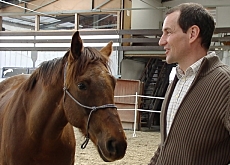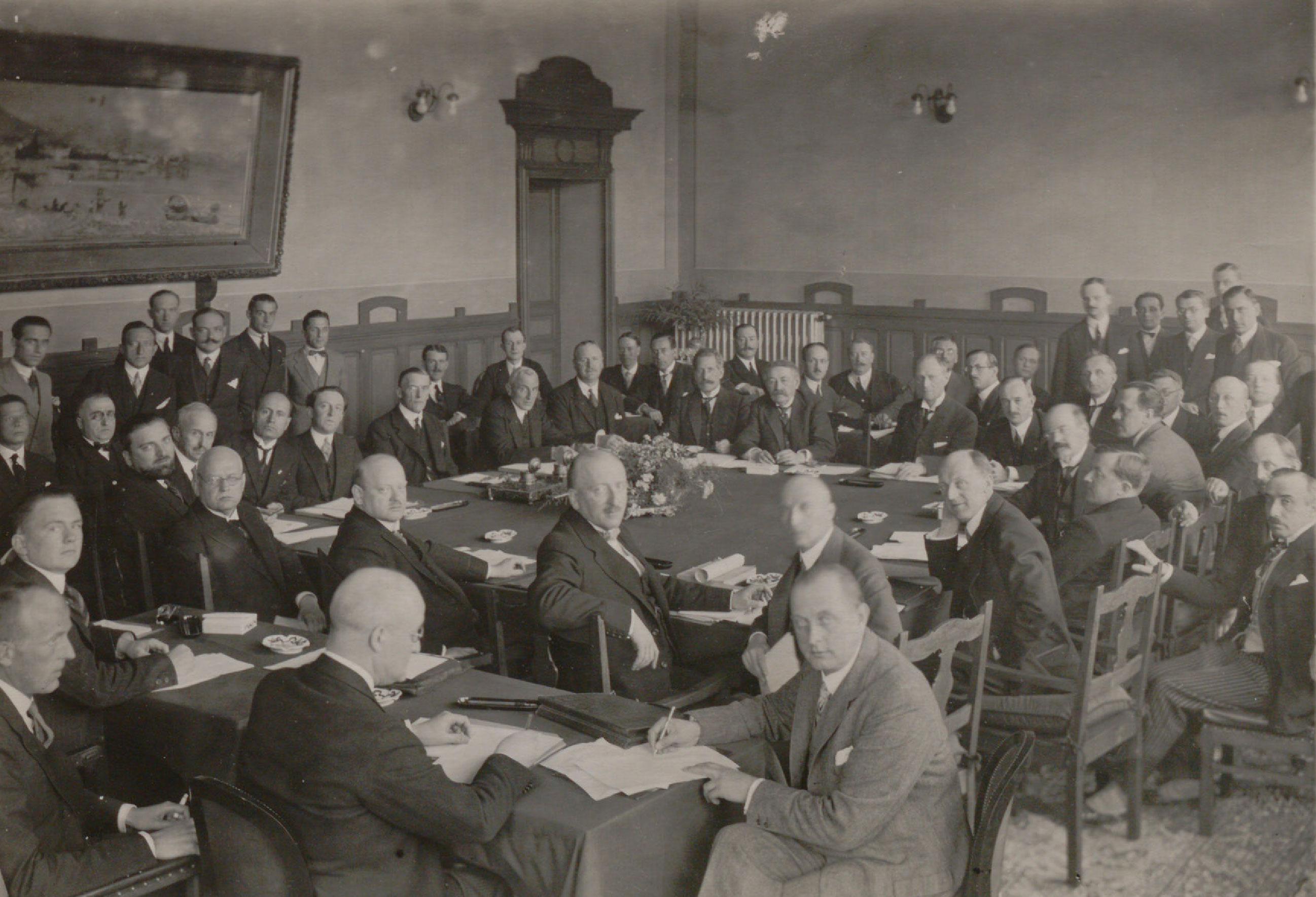
Horses whisper management skills

Swiss managers are quite literally learning from the horse's mouth how to do their jobs better, as swissinfo learned on a course near Zurich.
The lessons offered by a local consultancy are based on the view that when it comes to leading people there is much to learn from the behavioural patterns of equine herds.
The list of firms that have already sent their hotshots on the seminar, which takes place in stables in the rolling hills north of Zurich, is long and includes Josef Felder, the CEO of Zurich airport operator Unique.
He called the course “an unforgettable experience” and said that working with horses “permitted the most honest form of unfiltered feedback”.
Valentin Frischknecht, the organiser and CEO of Advanced Personal Communications (APC), explained that horse-whispering formed the basis of this type of training.
“We define a horse-whisperer as someone who is able to listen when the horse is ‘whispering’ – we believe that leadership in a company goes together with careful listening,” he said.
He added that there were certain parallels which could be drawn between equine behaviour in herds, and the way a company is run.
Lead mare
“Herds of horses are led by a mare – and not by a stallion as some assume – and this mare has three core competencies: she is able to communicate absolutely clearly, she is trusted by all members of the herd and she is fully respected,” Frischknecht said.
“That’s what we focus on: clear communication, trust and respect. Sometimes people are not clear, are not trusted and unable to trust others, and often when they ask someone to do something, it is not done because they are simply not respected enough,” he explained.
APC organises regular taster seminars at the stables in Auslikon, one of which took place recently. There were six novices on the course. Four, including me, confessed to having had no previous contact with these four-legged animals. And the other two had had riding lessons decades earlier as children.
Our group consisted of a headhunter, a human resources expert, a male director of a private Zurich bank, a television journalist and a female director of a Swiss charity.
After running through some dos and don’ts, Frischknecht stressed that there was always a clear hierarchy in an equine herd, with animals looking up to the top mare in their circle to lead them.
“In horses, the main mare is the strongest horse. She’s older and smarter than the others and that’s why she’s leading them,” he said.
Horses, according to Frischknecht, react only to unambiguous signals, just like company employees.
Contact
The first exercise was making contact with the horse. This meant getting into a ring with it and stroking it, using body language to inspire confidence. Cyrano, all 500 kilos of him, stood motionless in front of me. I stroked him and spoke to him soothingly; he started chewing, a sign that he felt comfortable.
The object of the next exercise was to lead the horse around the pen. I tugged on the line, Cyrano took a few steps forward and then refused to budge.
I turned to Frischknecht for help. He explained that leadership required three levels of personal commitment – the mental, emotional and physical. The leader needed to have a clear goal in mind, to feel confidence and to display this in their body language.
I steeled myself and told Cyrano firmly that I wanted him to follow me. It worked: as I tugged, he followed and he responded to my praise.
The next exercise was remaining stationary while leading the horse from a distance with a lead. You had to teach the horse to walk around two buckets positioned five metres apart, first in a circle and then in a figure of eight. Cyrano walked willingly in a circle while I guided him, standing between the buckets. But the figure of eight was another matter.
Meaning business
Frischknecht demonstrated that it was important to show the horse you meant business. Mutual respect was a pre-requisite. He outlined the four-stage escalation model to get something done.
However, Frischknecht stressed that in the management world it was important not to threaten and carry out threats the first time a manager makes a request. There has to be a period of escalation, where the pressure is increased at each level.
Back in the equine world, the trainer cracked the leather straps at the end of the lead line. The very sound made the animal jump.
He never used it against the horse but when its attention strayed, he twirled the straps within its field of vision, making it perk up and return to the task in hand.
How did my colleagues fare? The personnel assistant, after affectionately speaking to and stroking Cyrano, led him without difficulty. Again the figure of eight proved to be difficult.
It was then the headhunter’s turn. She took charge immediately but used the leather straps often and without hesitating. It soon became clear from the horse’s body language that it was only willing to play ball to a certain extent. It became agitated and stopped obeying commands.
All participants said they had learnt something from the course. The bank director was looking forward to exercising what he had learnt in the office and the headhunter agreed she had to tone down the excessive energy she put into trying to get things done.
Others, including me, were pleasantly surprised that it only took a few hours to overcome a fear of horses and learn more about the behaviour of two-legged beasts.
swissinfo, Faryal Mirza in Auslikon
Valentin Frischknecht was exposed to horses from an early age, thanks to his father who owned a horse farm in the American state of Virginia.
Frischknecht later went on to have a career in management until deciding to move into personnel coaching.
The full course his company offers consists of the following:
Half-day analysis of the participating company; one to three days of seminars – the first day is an introduction to leadership; the second day is with horses and on the third day, experiences are transferred into practice.

In compliance with the JTI standards
More: SWI swissinfo.ch certified by the Journalism Trust Initiative





































You can find an overview of ongoing debates with our journalists here . Please join us!
If you want to start a conversation about a topic raised in this article or want to report factual errors, email us at english@swissinfo.ch.